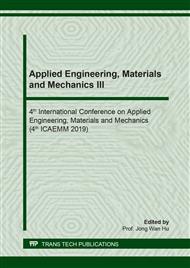p.37
p.44
p.50
p.56
p.62
p.72
p.77
p.82
p.87
Interfacial Tension Prediction of Readily-Mixed Waxy Crude Oil Emulsion at Pour Point Temperature
Abstract:
In the industry, stubborn emulsion still constitutes up to 20% of the total emulsion volume. The existing remediation strategies for emulsion treatment rely heavily on the study of heavy crude oil emulsion. However, minimal information is available on integrating interfacial rheology with emulsion stability on waxy crude oil emulsion. The proposed research provides a study to the development of integration between interfacial rheology and emulsion stability so that it can be a quick assessment but an accurate method to measure emulsion stability. The primary objectives of the research are to provide an extensional study to the design development of a comprehensive interfacial rheology protocol for the assessment of emulsion stability by developing a method of testing and monitoring the interfacial rheology and to investigate the demulsification ability of the waxy crude oil emulsion subjected to microbial treatment. The novelty of this study is to use the newly developed measurement protocol via interfacial rheology to predict emulsion stability. Application of the microbes on waxy crude oil to breakdown the water-in-oil emulsion using a rheometer will also be explored. The treatment is targeted to disintegrate the interfacial layer within the emulsion leading to better oil recovery. Rheological properties of the emulsion will be monitored upon the microbial injection to analyze the effects of the treatment on the rheology of emulsion. The outcomes from this research is that the newly developed protocol will predict emulsion stability that could resolve the stubborn emulsion issues via the developed interfacial rheology protocol, which could be time-saving and increases the production efficiency. This research paper is a study to develop a correlation on surface tension and interfacial tension between crude oil, water and a readily-mixed emulsion.
Info:
Periodical:
Pages:
62-71
Citation:
Online since:
August 2019
Authors:
Price:
Сopyright:
© 2019 Trans Tech Publications Ltd. All Rights Reserved
Share:
Citation:


